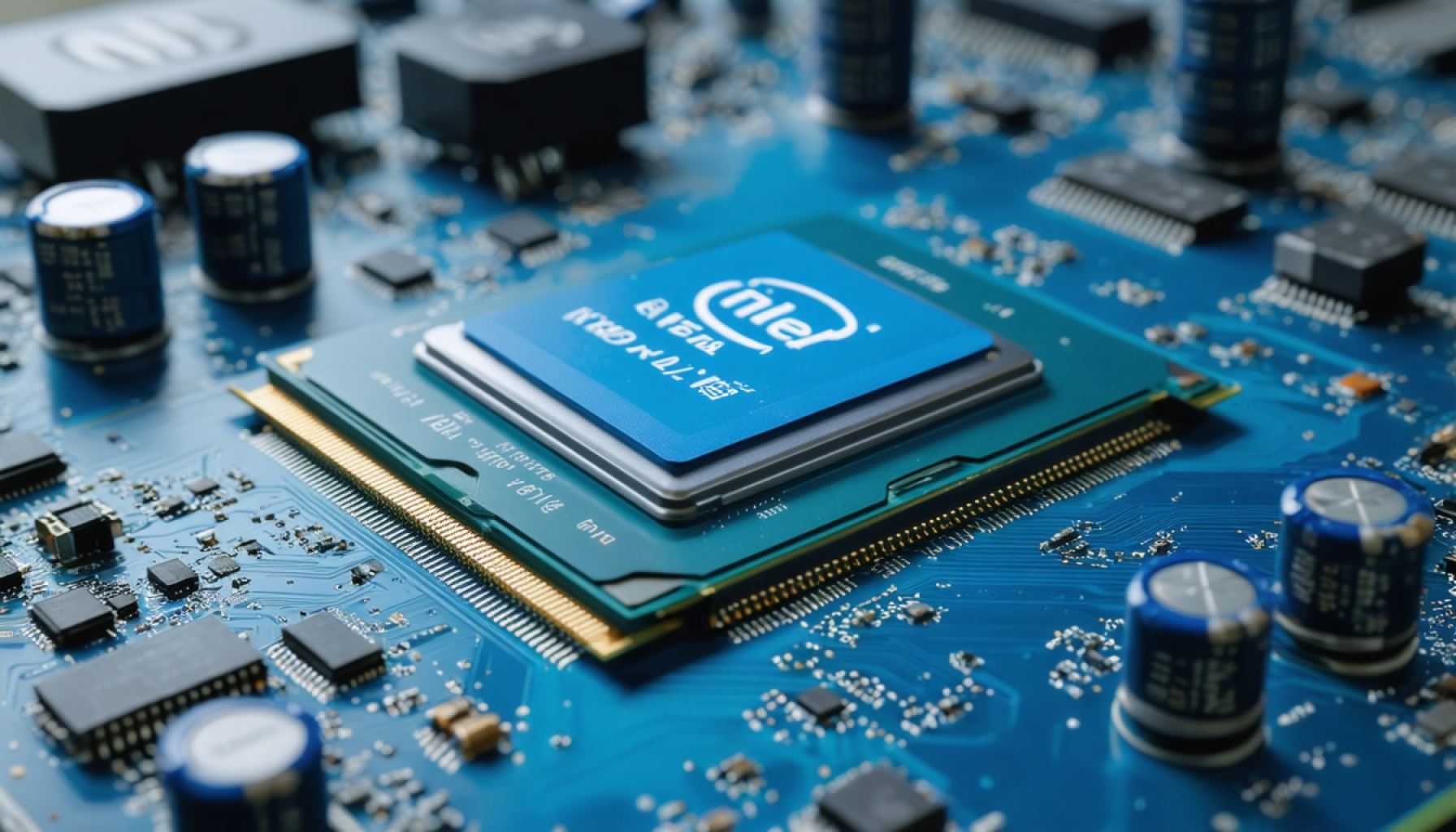- Intel is strategically focusing on its foundry business, eyeing a potential partnership with Nvidia to rival TSMC.
- The innovative Intel 18A process node is central to Intel’s plans to enhance performance and efficiency.
- Nvidia faces a supply shortfall due to high demand for its RTX 50 series, making Intel’s potential partnership appealing for gaming GPU production.
- Shifting production to Intel could help Nvidia meet gaming demand and capitalise on AI opportunities with TSMC, avoiding tariffs on Taiwanese imports.
- An Intel-Nvidia partnership wouldn’t yield immediate results, but it could boost investor confidence and signal Intel’s technological prowess.
- Under CEO Lip-Bu Tan, Intel aims to redefine its role in the global semiconductor industry, reflecting a renewal in its strategic vision.
Amid the relentless drumbeat of digital transformation and the race for processing supremacy, Intel is positioning itself for a seismic shift that could redefine its trajectory. As the tech titan embarks on an ambitious journey, CEO Lip-Bu Tan is making waves by targeting Intel’s foundry business for a dramatic resurgence, propelled by its innovative Intel 18A process node.
At the heart of this transformative vision lies a tantalising possibility: securing Nvidia as a foundry customer. The potential deal, hinted at by industry whispers, stands as a beacon of hope for Intel, which aims to rival industry juggernaut TSMC in performance and efficiency. With Microsoft and Amazon already bolstered in its portfolio, the inclusion of Nvidia — the undisputed leader in the fabless chip market — could serve as a pivotal landmark for Intel’s aspirations.
The logic behind Nvidia’s potential switch is as compelling as it is strategic. Amid an unyielding demand for gaming GPUs, exacerbated by the launch of its RTX 50 series, Nvidia has found itself grappling with an acute supply shortfall. This scarcity isn’t just a matter of consumer frustration; it’s a challenge threatening Nvidia’s market stronghold in gaming, especially with AMD’s RX 9000 series nipping at its heels.
More importantly, Nvidia’s focus has gradually skewed towards a more profitable realm: data centre GPUs designed for AI workloads — a sector that’s racing towards the stratosphere in demand. By possibly reallocating gaming GPU production to Intel’s capable facilities, and maintaining AI chip manufacturing with TSMC, Nvidia could deftly address both ends of its production spectrum, appeasing gamer angst while seizing AI opportunities.
Politically, a stateside shift in production could not only harmonise Nvidia with current U.S. manufacturing incentives but also insulate it against potential tariffs looming over Taiwanese imports — a savvy move in an era charged with economic nationalism.
However, this venture into unfamiliar partnership territories doesn’t come without its delays. Even with Nvidia’s hypothetical sign-on, tangible dividends wouldn’t materialise until the introduction of future products, like upcoming generations of gaming GPUs slated for post-2026 releases. Yet, the symbolic victory of clinching Nvidia’s portfolio would resonate far beyond immediate fiscal returns. Such a partnership could act as a trust signal for investors, asserting Intel’s steadiness and prowess of the Intel 18A process, potentially sparking wider adoption among other chip designers.
For Intel, the stakes are monumental. This strategic courtship with Nvidia may not guarantee instant revitalisation, but the mere prospect is a watershed moment. It presents an opportunity for revitalised investor confidence, suggesting that under Tan’s leadership, Intel may once again play a defining role in the global semiconductor narrative. The move, speculative as it might currently be, paints a portrait of a company poised on the brink of reinvention — a storyline both cautionary and captivating for anyone vested in the future of technology.
The Seismic Shift in Semiconductor Manufacturing: Intel’s Bold Moves and Nvidia’s Strategic Choices
Unpacking Intel’s Foundry Ambitions: The Reality Behind the Nvidia-Intel Partnership Buzz
Intel’s resurgence strategy is garnering significant attention, driven by its ambitious plans to revamp its foundry business and a potential partnership with Nvidia. This pivot comes at a crucial time when they are looking to rival the dominant TSMC using the advanced Intel 18A process node.
Key Details on Intel’s Strategic Moves
1. The Intel 18A Process Node:
– Intel’s 18A process is a technologically advanced node expected to offer enhanced transistor density and performance. It’s an essential part of Intel’s plan to lure high-profile clients like Nvidia and differentiate itself from competitors like TSMC.
– According to industry experts, Intel’s 18A node could offer competitive advantages in power efficiency and speed, making it attractive for companies focusing on demanding applications like AI and high-performance computing.
2. A Historic Partnership with Nvidia:
– Nvidia’s potential move to Intel’s foundry marks a significant strategic shift, especially as they continue to face supply chain challenges with their gaming GPUs.
– For Nvidia, partnering with Intel can provide diversification of production facilities and insulation from geopolitical tensions affecting Taiwanese imports.
3. Implications for the Gaming and AI Markets:
– By reallocating gaming GPU production, Nvidia could potentially stabilise the supply of their in-demand RTX 50 series and capture market share from competitors such as AMD.
– Continuing to produce AI chips with TSMC while venturing into Intel’s facilities for gaming GPUs allows Nvidia to leverage the best manufacturing processes available.
4. Political and Economic Considerations:
– With increasing U.S. manufacturing incentives, Nvidia’s move could align with national strategies to bolster domestic production and secure supply chains.
– This strategic alignment could also help Nvidia navigate potential tariff regulations, further cementing their market presence during economically protectionist times.
Market Forecasts & Industry Trends
– Growth in Foundry Industry: The demand for AI and gaming technologies is likely to sustain high growth rates for semiconductor foundries. The foundry industry is predicted to grow annually by about 5-7% over the next five years, driven by increased demand for chips in sectors beyond computing, such as automotive and IoT.
– Intel’s Market Position: Should Intel succeed in securing Nvidia as a customer, it could substantially strengthen its position within the semiconductor manufacturing industry, enhancing market perceptions and investor confidence.
Recognising Controversies & Challenges
– Technological and Production Delays: Transitioning manufacturing for high-performance chips to new facilities is complex and might face delays, impacting the timely release of new products.
– Competition with Established Players: Despite Intel’s advances, TSMC and Samsung remain formidable challengers with established client bases and advanced manufacturing techniques, which might pose hurdles for Intel’s market ambitions.
Actionable Recommendations for Investors and Industry Stakeholders
– For Investors: Monitor Intel’s progress with its Intel 18A process and potential Nvidia partnership closely. Such developments could be indicative of Intel’s long-term market prospects and influence stock valuations.
– For Tech Companies: Explore strategic partnerships with diversified foundry services like Intel to mitigate risks related to supply chain disruptions and geopolitical tensions.
Intel’s strategy to secure Nvidia as a foundry customer is a daring move with potential implications for the semiconductor industry’s future. By focusing on technological innovation and strategic alliances, Intel aims to reclaim its status as a leader in chip manufacturing.
For more information on Intel’s broader strategies and innovations, visit Intel.












